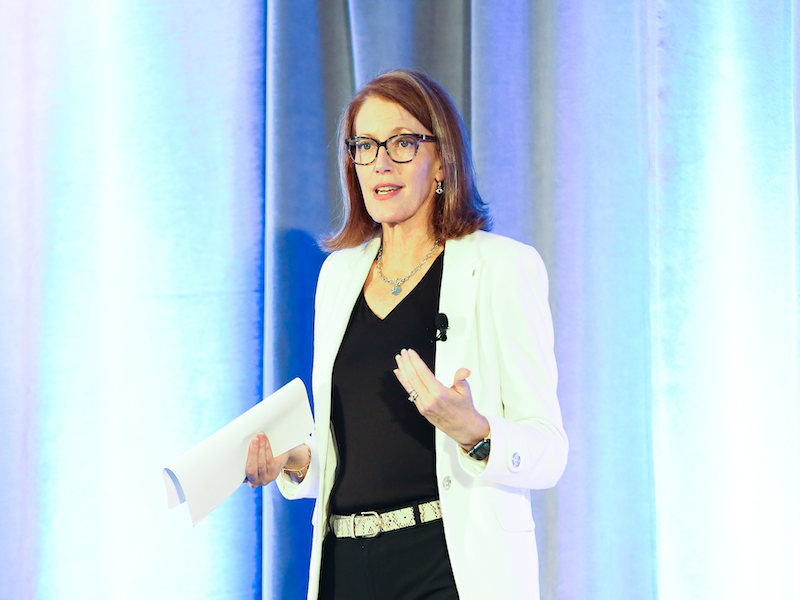

Hydro Ottawa Holding Inc. is tailoring its benefits and wellness programs to its unique demographics to more effectively support employee well-being, said Donna Burnett Vachon, the company’s director of change and organization development, during Benefits Canada‘s 2023 Healthy Outcomes Conference in October.
The company has four subsidiaries, with each doing slightly different types of work, including both office and field-based settings, so Hydro Ottawa has to consider two realities when designing benefits. In terms of demographics, roughly half of the roles are in field-based roles and more than 90 per cent of those employees are male. As well, nearly 50 per cent of the workforce is under age 35, a significant difference because not long ago most of its workforce was at the other end of the spectrum.
“Like many organizations, we feel promoting a workplace that supports employee well-being is critical to ensuring we have an engaged and resilient workforce,” said Burnett Vachon. “But we also believe every employee’s health and well-being journey is different. People have unique needs [and] goals. One size doesn’t fit all and we work hard to meet our employees where they’re at.”
Read: Shopify’s 2021 Workplace Benefits Awards win helping expand employee wellness programs
Hydro Ottawa takes a holistic view of employee well-being, focusing on physical health, financial wellness, healthy workspaces, mental well-being and workplace safety. When its numbers started to reflect a rise in musculoskeletal injury, the wellness team worked closely with safety partners and trade supervisors to create an injury prevention program. It brought in kinesiologists and physiotherapists to work with trades employees and held ergonomics presentations for office employees. The company also created a specific program for shift workers to help manage their sleep and overall health due to the demanding nature of their shifts.
In the last few years, Hydro Ottawa focused more on financial wellness because it recognized its increasingly diverse workforce was dealing with different financial stressors. To help meet everyone’s unique needs, it introduced an extensive financial literacy series and pre-retirement planning.
The company also addressed its workspaces to ensure they promoted well-being and proper ergonomics. “We ran a facilities renewal program about six years ago and health and well-being drove a lot of the design decisions,” said Burnett Vachon. “We created opportunities for people to move around [as well as] collaboration spaces.”
Read: How employers can support ergonomics, reduce chronic pain amid return to office
Like most organizations, Hydro Ottawa ramped up its focus on mental health during the pandemic. Its priority was for employees to access mental-health resources anytime, anywhere and on any device, she said, noting the company added multiple virtual-care resources for mental and physical well-being.
After introducing the new offerings, the organization took a unique approach to internal marketing to make the content more relatable to trade workers and its predominantly male workforce. “We try to be very purposeful about the images and words we use. This may seem strange for a human resources group, but we have a digital media specialist on our team who can create [easily accessible and relatable] content for us.”
Read more coverage of the 2023 Healthy Outcomes Conference.
